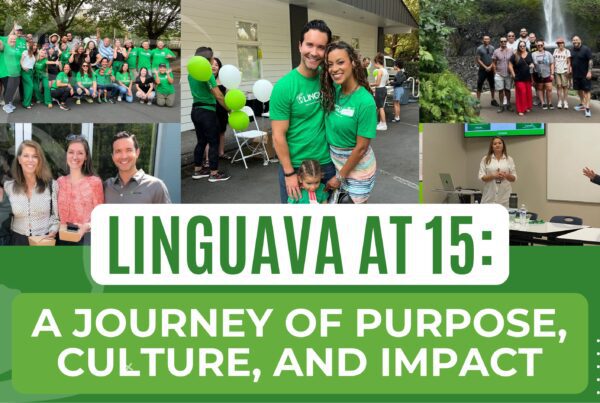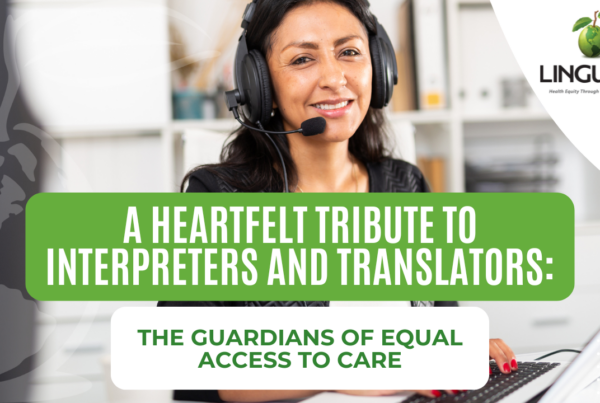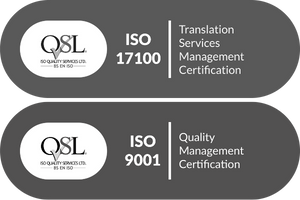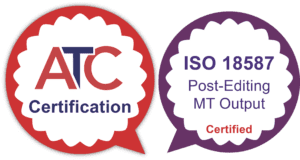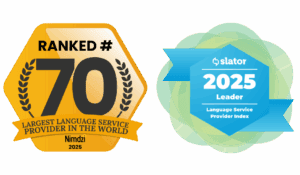According to the National Center for Biotechnology (NCBI) patients who are Deaf or Hard of Hearing, as well as patients who are determined to be Limited English Proficient (LEP) are 9 times
more likely to have trouble understanding a medical scenario.
In the midst of a global pandemic, access to medical information has never been more important. With the arrival of COVID-19 vaccines, it is essential that we think about how these vaccine announcements are being delivered to the Deaf and LEP communities.
Linguava CEO David Brackett had the opportunity to connect with William Kabele, Certified Registered Nurse Anesthetist (CRNA) from a large hospital in Oregon, to hear his perspective on the COVID -19 Vaccine and the impact of language access on health care during this critical time.

Q: What mode of interpretation is Kaiser most utilizing during the pandemic? (onsite, telephonic, video relay interpretation, Telehealth)
A: The pandemic has certainly shaken up many aspects of how we deliver anesthesia. Medical interpretation has not been spared. Before the pandemic onsite interpretation was the most
prevalent followed by telephone with video gradually seeing more and more use. The pandemic, sort of, sped up the transition from in person interpretation to more of the Telehealth. As providers I can’t tell you how lucky it was that this technology is available. Without the Telehealth and telephonic interpretive services options, I really don’t know how we would be getting through surgeries right now.
Q: Do you anticipate a “surge” in Limited English proficient and Deaf clients due to the vaccine?
A: I am hopeful to see a surge in all demographics coming in to get vaccinated. This would absolutely include Limited English Proficient and Deaf patients.
Q: How will the need to have a 2nd vaccine dose ~28 days apart be explained to Limited English Proficient and Deaf clients and do you anticipate difficulties getting them to return?
A:You bring up an important point and possible pitfall of the vaccine roll out. Because it is a two- part vaccine, compliance is a factor. Non-compliance can certainly be a result of incomplete or inadequate communication between patient and provider. Combating this information transfer vortex is difficult in its own right.We all transmit and receive information in different ways. The trick is to find a way where a lot of important information can be shared, back and forth, in a succinct way between provider and patient. Sometimes that’s as simple as a conversation, sometimes it is written instructions, sometimes it’s a video or demonstration. Whatever it is, it gets infinitely more complex with the addition of a language or communication barrier. But that is why interpretive services are so vital to medicine.
Q: What message would you want the Limited English Proficient and Deaf community to know about the COVID vaccine?
A: I’d like to address some of the concerns and misinformation about this vaccine. The most common concern I am seeing is that this vaccine was “rushed.” I’d like to take a moment to address the difference between “rushed” and “prioritized.” It is of important note that this vaccine went through all the typical rigor and scientific scrutiny as every other vaccine. That includes everything from animal trials to several double blinded placebo controlled randomized studies. And the efficacy results were impressive. What people may not realize is when they started developing this mRNA vaccine, they weren’t starting from scratch.
The mRNA vaccine has really been in development for over two decades. During the SARS outbreak years ago this type of vaccine received substantial funding and huge leaps were made in its development. Then the SARS pandemic luckily died down and funding dried up. Most aspects of the vaccine had already been sorted except for how to keep it from getting degraded too fast in the body before it could work. Over the last year this and customizing it toward COVID was the issue that required resolution, not developing the whole vaccine from scratch. With a renewed importance, and thus funding, the vaccine development was prioritized but not corners were cut in the development of this vaccine.
The second concern I would like to address is that of unknown long term side effects. Unfortunately, vaccines can have side effects, and it is important to note that an overwhelming majority happen within the first three months after the vaccine. This have been studied and shown to be usually fatigue, malaise and a sore arm. And while it is impossible to have data on super long term side effects, say a year after vaccination, we are getting lots of data showing really nasty long term side effects of patients who get COVID, particularly younger patients. So while I definitely understand the concern, the fact of the matter is the minute potential for long term side effects from the vaccine certainly doesn’t out-weight the known established long term side effects from those who get the disease, even a mild form of it. The last, and most exciting aspect of this vaccine to appreciate is its mechanism of action and resulting safety implications. It is fundamentally a safer delivery system. What I mean by that is, traditional vaccines are a dead or partial component of the virus; maybe a surface protein from the cell. Your body then recognizes this component as problematic and figures out how to mount a defense the next time it is encountered. This new vaccine doesn’t involve injecting any part of an actual virus into you at all. Instead, it injects a small mRNA blueprint for a single protein found on the virus surface. Your body then manufactures this single inert protein, recognizes it and plans a defense accordingly. It really is an amazing bit of science. The vaccine rollout contains many different facets and lots of information is being announced to the community. We encourage all health care providers to partner with your language service provider in order to assure that your roll out plan is providing meaningful language access to the LEP and Deaf communities.
If you are interested in learning more about how Linguava could help your organization with language interpretation or translation services you can connect with us at sales@linguava.com.


